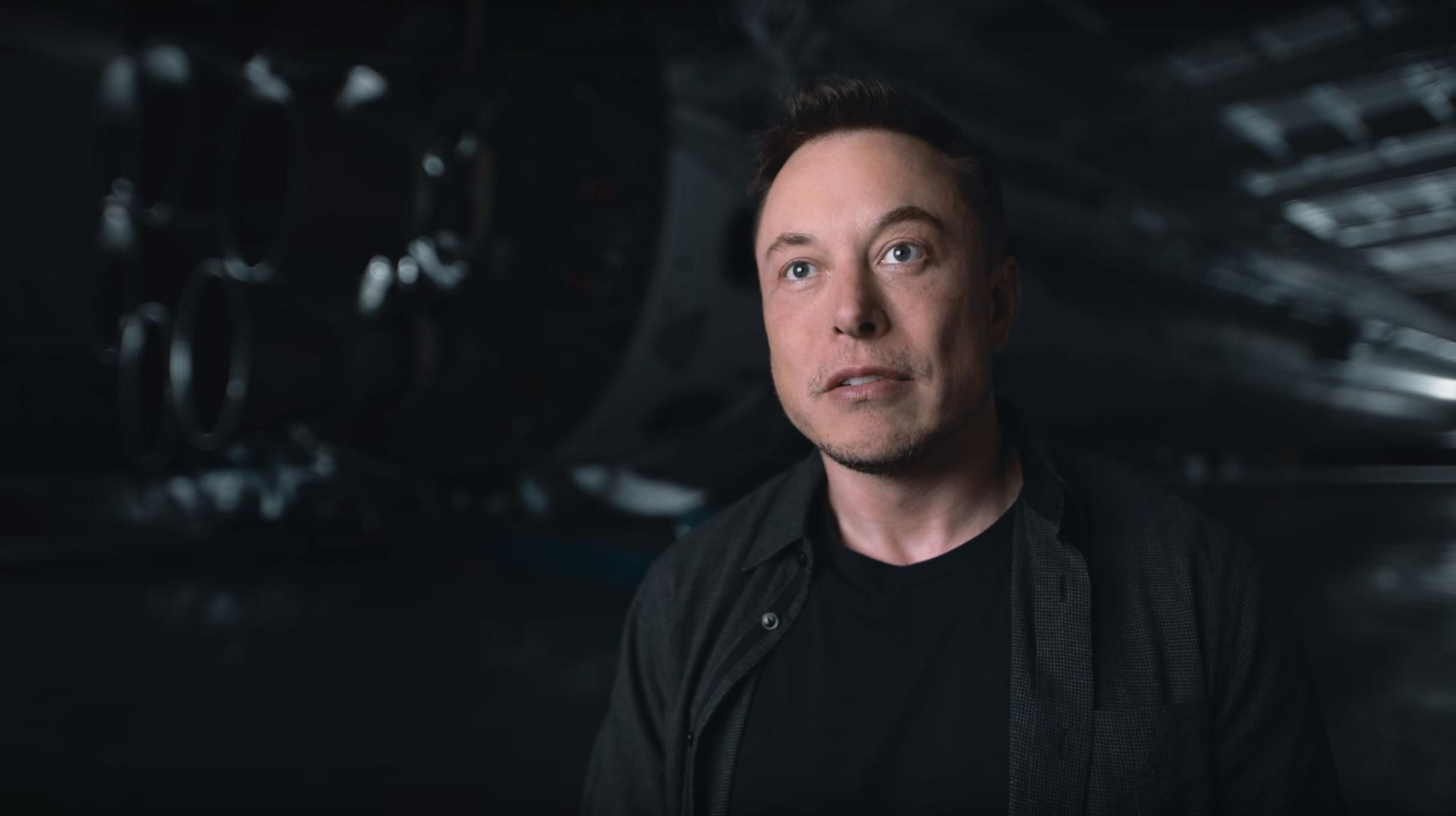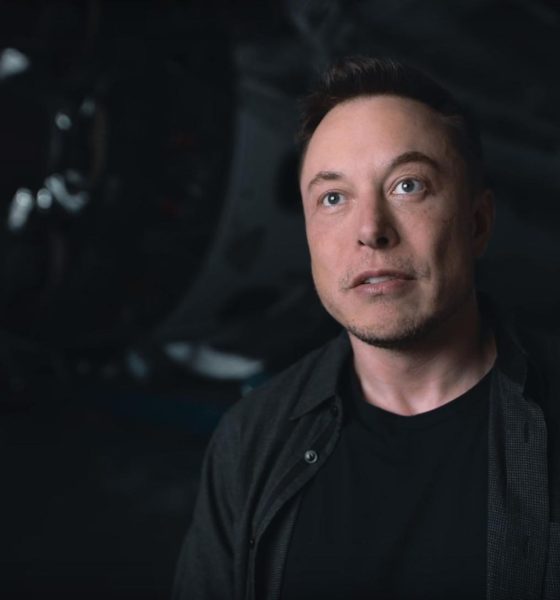

News
Elon Musk wants the Government to be a referee, not a player in the game of industry and innovation
Elon Musk is one of the most innovative minds to ever exist in the tech community. With his multiple companies providing successful changes in how some industries, like automotive, are looked at, Musk is a proven CEO with a track record to back it up. His many ideas basically changed the idea of what it is like to drive a car, which many of us thought would be dominated by gas and diesel-powered engines for years to come. An innovative mind and a lot of hard work undoubtedly contributed to Tesla’s success, and Musk has no interest in giving credit to anyone who didn’t earn it.
With the election coming to a close and a new Presidential campaign being selected to run the United States for the next four years, Musk was recently asked during an interview with the Wall Street Journal whether President-Elect Joe Biden’s plans to spend big on industry and innovation were a good thing. Musk doesn’t seem to have a problem with the idea, but he is vocal about the fact that the government should do more regulating than contributing. The role of Government, after all, is to enact laws and make sure they are abided by citizens. Additionally, assisting with companies’ innovation is something the Government shouldn’t stick its nose up at. Still, Musk just hopes that it plays more of an administrative role instead of becoming a “player in the game.”
A big thanks to our long-time supporters and new subscribers! Thank you.
“It’s the Government’s role to establish the rules of the game and then ensure that those rules are properly enforced,” Musk said. The CEO even compared the Government’s role to that of a referee in a game of football: Know the rules, enforce them correctly, make sure the game is fair.
What the Government doesn’t need to do is stay out of the way of the big companies who are working to innovate the processes of daily life to benefit them and their objectives. “I think when the Government does not do a great job is when they want to not just be a referee on the field, they want to be a player on the field. This does not end up in a good situation.”
The issue with the Government overreaching into the field of industry and innovation is that they will “pick technology winners and losers” instead of letting companies play out their innovation themselves. This could lead to small companies being undermined even if they have ideas or technology that larger companies don’t have access to.
This scenario, if Government was overly involved in tech and innovation, could have crippled Tesla’s efforts when the company was just starting to churn out vehicles in 2008. Even though Tesla had established itself as a player in electric vehicles, it was a small, relatively unknown company that faced massive problems due to lack of funds. Nearly shutting its doors after issues with the original Roadster, Tesla somehow overcame the adversity and received more investor money.
Now, imagine if the Government would have been a player instead of a referee in this scenario. It would have likely given a large financial assistance package to a well-developed, large scale automaker like Ford or GM to develop EVs. Instead, it stayed out of the innovation portion of the equation and let the players decide the game for themselves. Tesla ended up becoming the leader in EVs, while GM and Ford are failing to catch up. It’s fairly safe to say that without Tesla, EVs would not be what they are today. The legacy automakers that exist in the universe of automotive manufacturing would likely have cranked out one or two low-range models because their primary focus is still on gas-powered cars and not on electrification.
This whole picture perfectly aligns with how Tesla’s story has played out thus far. It is fairly obvious that the Government in 2008 would have sided with a company with proven infrastructure, and not some company who had a shot in the dark to change the entire framework of vehicle manufacturing. This is where Musk made his next point: Make the rules that incentivize the outcome, not the path.
The ultimate goal is to let companies figure out issues on their own. There is no reason to have Government programs essentially hold the hands of private industry. There needs to be more of a focus on the end goal and not the path a company takes to get there. Rarely is the road to success a straight and narrow path. Many companies, Tesla being a prime example, have to fight and struggle to create a new, innovative project. Tesla’s story is perfect evidence that the end goal takes a lot of persistence and it doesn’t need to be filled with hand-holding from large Government entities. While Biden’s plan to pump money into innovation and industry may help some companies get back on their feet in dire times of need, it shouldn’t hold the hands of these large companies whose job it is to figure out the answer to problems.
When large car companies begin to manufacture and deliver electric vehicles that are good for consumers, then they should be rewarded. Riding on the coattails of Government assistance packages that don’t necessarily guarantee innovation is the wrong way to go about things. When companies prove that they are in the business of creating a great product, then the rewards should come in. It’s that simple.
On behalf of the entire Teslarati team, we’re working hard behind the scenes on bringing you more personalized members benefits, and can’t thank you enough for your continued support!

News
Tesla China quietly posts Robotaxi-related job listing
Tesla China is currently seeking a Low Voltage Electrical Engineer to work on circuit board design for the company’s autonomous vehicles.

Tesla has posted a new job listing in Shanghai explicitly tied to its Robotaxi program, fueling speculation that the company is preparing to launch its dedicated autonomous ride-hailing service in China.
As noted in the listing, Tesla China is currently seeking a Low Voltage Electrical Engineer to work on circuit board design for the company’s autonomous vehicles.
Robotaxi-specific role
The listing, which was shared on social media platform X by industry watcher @tslaming, suggested that Tesla China is looking to fill the role urgently. The job listing itself specifically mentions that the person hired for the role will be working on the Low Voltage Hardware team, which would design the circuit boards that would serve as the nervous system of the Robotaxi.
Key tasks for the role, as indicated in the job listing, include collaboration with PCB layout, firmware, mechanical, program management, and validation teams, among other responsibilities. The role is based in Shanghai.
China Robotaxi launch
China represents a massive potential market for robotaxis, with its dense urban centers and supportive policies in select cities. Tesla has limited permission to roll out FSD in the country, though despite this, its vehicles have been hailed as among the best in the market when it comes to autonomous features. So far, at least, it appears that China supports Tesla’s FSD and Robotaxi rollout.
This was hinted at in November, when Tesla brought the Cybercab to the 8th China International Import Expo (CIIE) in Shanghai, marking the first time that the autonomous two-seater was brought to the Asia-Pacific region. The vehicle, despite not having a release date in China, received a significant amount of interest among the event’s attendees.
Elon Musk
Elon Musk and Tesla AI Director share insights after empty driver seat Robotaxi rides
The executives’ unoccupied tests hint at the rapid progress of Tesla’s unsupervised Robotaxi efforts.

Tesla CEO Elon Musk and AI Director Ashok Elluswamy celebrated Christmas Eve by sharing personal experiences with Robotaxi vehicles that had no safety monitor or occupant in the driver’s seat. Musk described the system’s “perfect driving” around Austin, while Elluswamy posted video from the back seat, calling it “an amazing experience.”
The executives’ unoccupied tests hint at the rapid progress of Tesla’s unsupervised Robotaxi efforts.
Elon and Ashok’s firsthand Robotaxi insights
Prior to Musk and the Tesla AI Director’s posts, sightings of unmanned Teslas navigating public roads were widely shared on social media. One such vehicle was spotted in Austin, Texas, which Elon Musk acknowleged by stating that “Testing is underway with no occupants in the car.”
Based on his Christmas Eve post, Musk seemed to have tested an unmanned Tesla himself. “A Tesla with no safety monitor in the car and me sitting in the passenger seat took me all around Austin on Sunday with perfect driving,” Musk wrote in his post.
Elluswamy responded with a 2-minute video showing himself in the rear of an unmanned Tesla. The video featured the vehicle’s empty front seats, as well as its smooth handling through real-world traffic. He captioned his video with the words, “It’s an amazing experience!”
Towards Unsupervised operations
During an xAI Hackathon earlier this month, Elon Musk mentioned that Tesla owed be removing Safety Monitors from its Robotaxis in Austin in just three weeks. “Unsupervised is pretty much solved at this point. So there will be Tesla Robotaxis operating in Austin with no one in them. Not even anyone in the passenger seat in about three weeks,” he said. Musk echoed similar estimates at the 2025 Annual Shareholder Meeting and the Q3 2025 earnings call.
Considering the insights that were posted Musk and Elluswamy, it does appear that Tesla is working hard towards operating its Robotaxis with no safety monitors. This is quite impressive considering that the service was launched just earlier this year.
Elon Musk
Starlink passes 9 million active customers just weeks after hitting 8 million
The milestone highlights the accelerating growth of Starlink, which has now been adding over 20,000 new users per day.

SpaceX’s Starlink satellite internet service has continued its rapid global expansion, surpassing 9 million active customers just weeks after crossing the 8 million mark.
The milestone highlights the accelerating growth of Starlink, which has now been adding over 20,000 new users per day.
9 million customers
In a post on X, SpaceX stated that Starlink now serves over 9 million active users across 155 countries, territories, and markets. The company reached 8 million customers in early November, meaning it added roughly 1 million subscribers in under seven weeks, or about 21,275 new users on average per day.
“Starlink is connecting more than 9M active customers with high-speed internet across 155 countries, territories, and many other markets,” Starlink wrote in a post on its official X account. SpaceX President Gwynne Shotwell also celebrated the milestone on X. “A huge thank you to all of our customers and congrats to the Starlink team for such an incredible product,” she wrote.
That growth rate reflects both rising demand for broadband in underserved regions and Starlink’s expanding satellite constellation, which now includes more than 9,000 low-Earth-orbit satellites designed to deliver high-speed, low-latency internet worldwide.
Starlink’s momentum
Starlink’s momentum has been building up. SpaceX reported 4.6 million Starlink customers in December 2024, followed by 7 million by August 2025, and 8 million customers in November. Independent data also suggests Starlink usage is rising sharply, with Cloudflare reporting that global web traffic from Starlink users more than doubled in 2025, as noted in an Insider report.
Starlink’s momentum is increasingly tied to SpaceX’s broader financial outlook. Elon Musk has said the satellite network is “by far” the company’s largest revenue driver, and reports suggest SpaceX may be positioning itself for an initial public offering as soon as next year, with valuations estimated as high as $1.5 trillion. Musk has also suggested in the past that Starlink could have its own IPO in the future.








